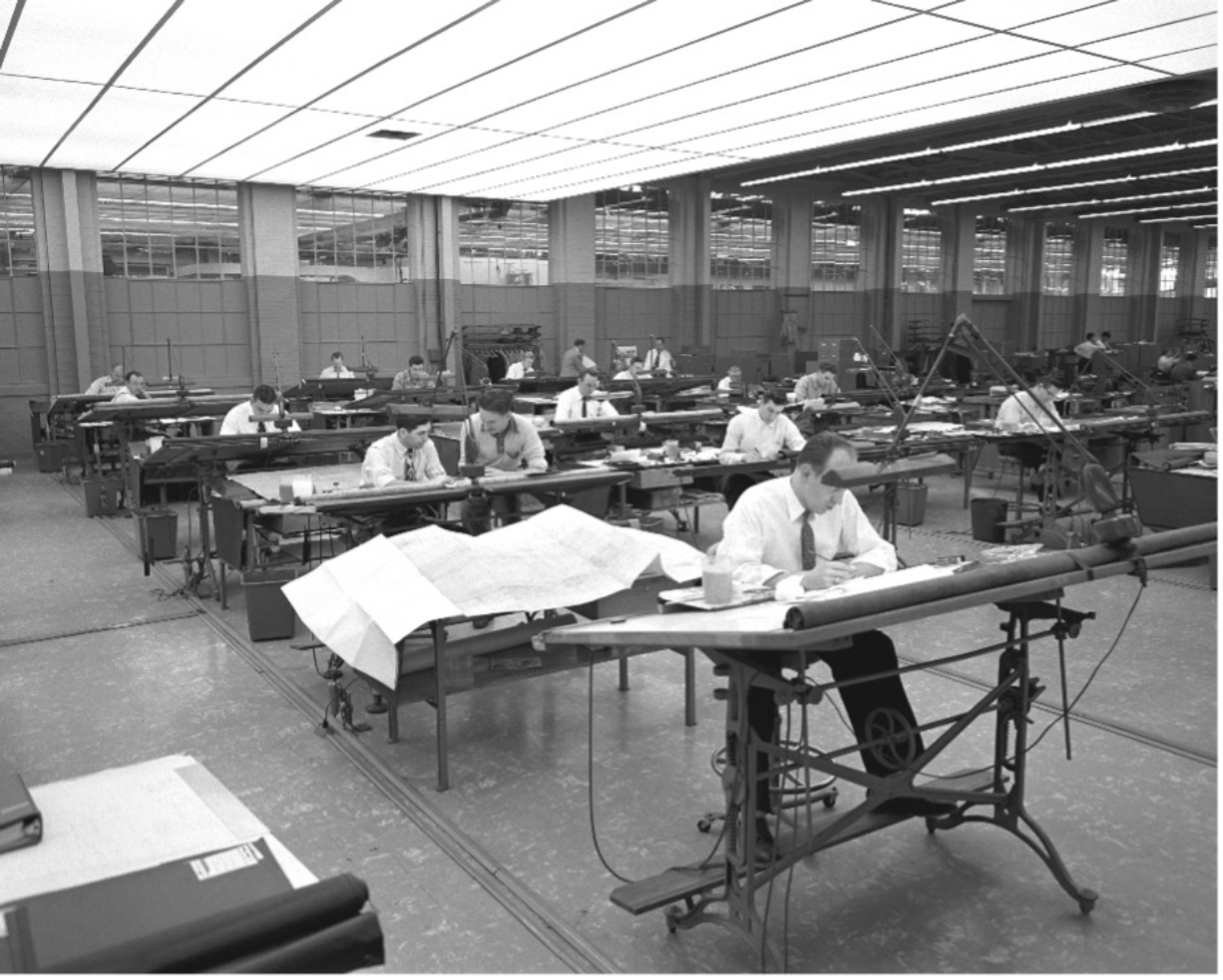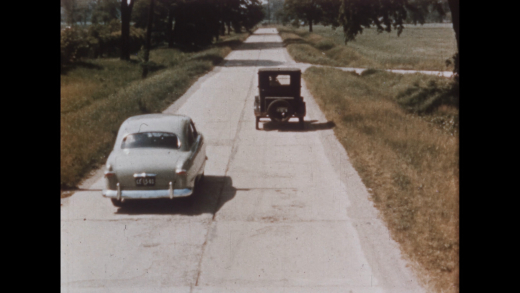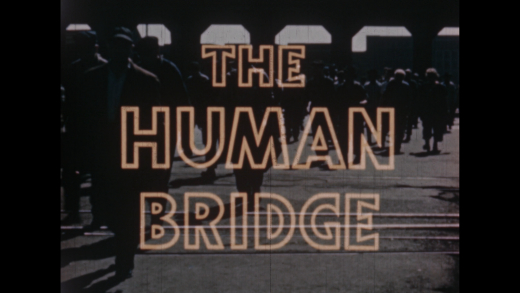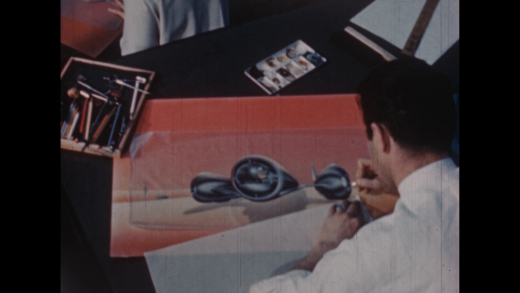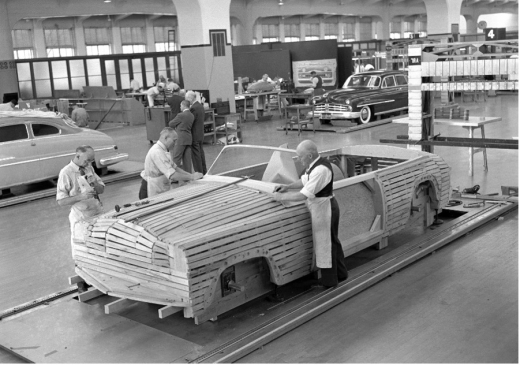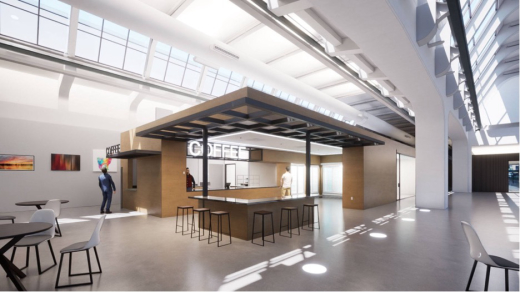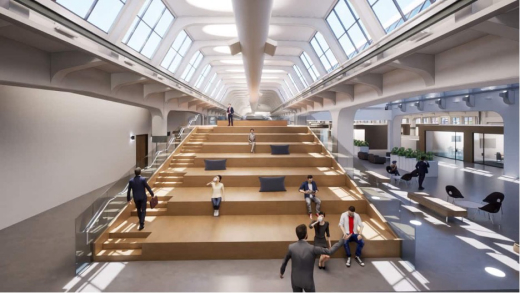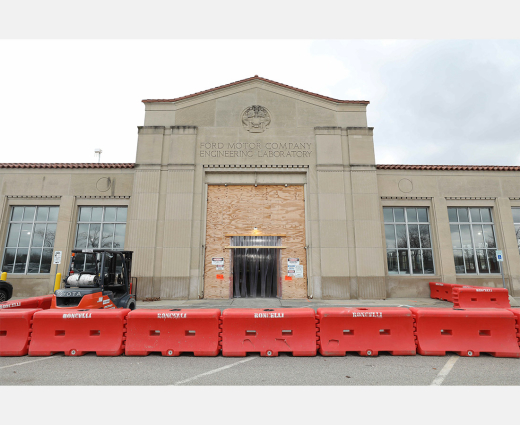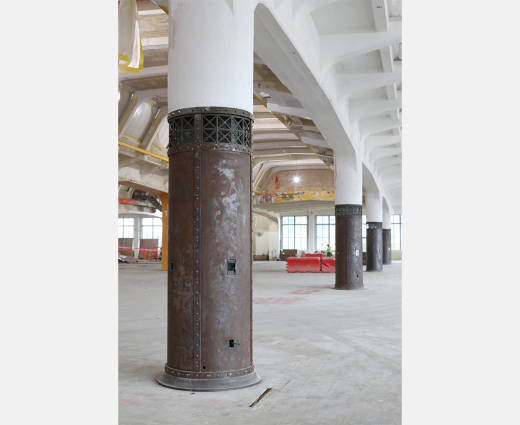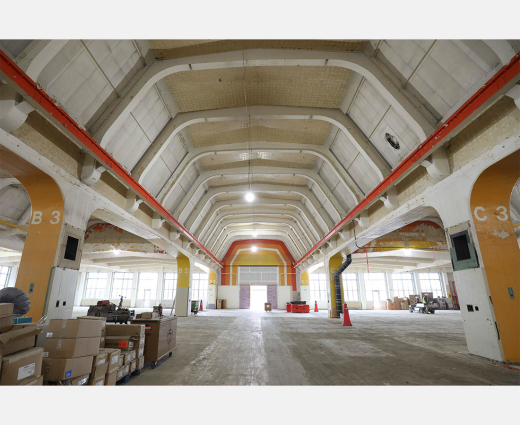Ford Campus Background
The Ford Motor Company corporate campus is located about 10 miles west of Detroit in the city of Dearborn. Ford first began purchasing property here along the Rouge River in 1915, but it was not until 1917, with the impetus of World War I, that they completed the first structure to produce eagle boats for the war effort. Countless additions later, the Rouge complex, now referred to as the Ford Rouge Center, is still operational and is itself an exemplar of adaptive reuse. The expansion of production at the Rouge anchored Ford in Dearborn, where the company would continue to expand its campus, especially after World War II.
Albert Kahn designed most of these early Rouge constructions. Kahn was beyond prolific in his partnership with Ford, designing hundreds of other buildings in Dearborn, around the country, and internationally. While his work can be found around the world, Kahn is recognized as the preeminent Detroit industrial architect of his time. His work in Detroit is also quite varied as he designed several factories (not just for Ford), public buildings, schools, and private homes, including the home of Edsel and Eleanor Ford. He worked very closely with Henry Ford on many of the commissions he completed on behalf of the Company, with the Ford Engineering Laboratory as one of the most notable.
